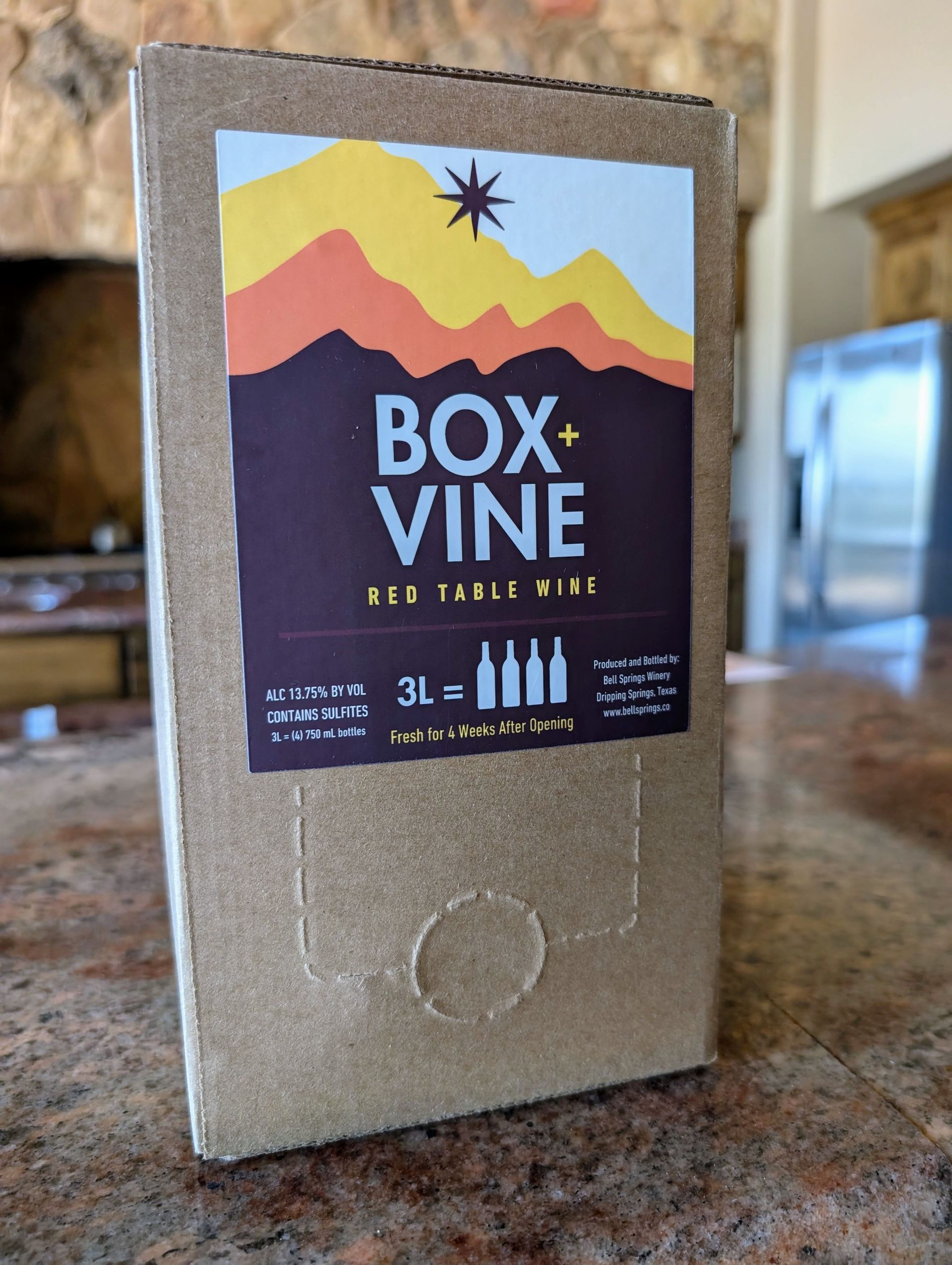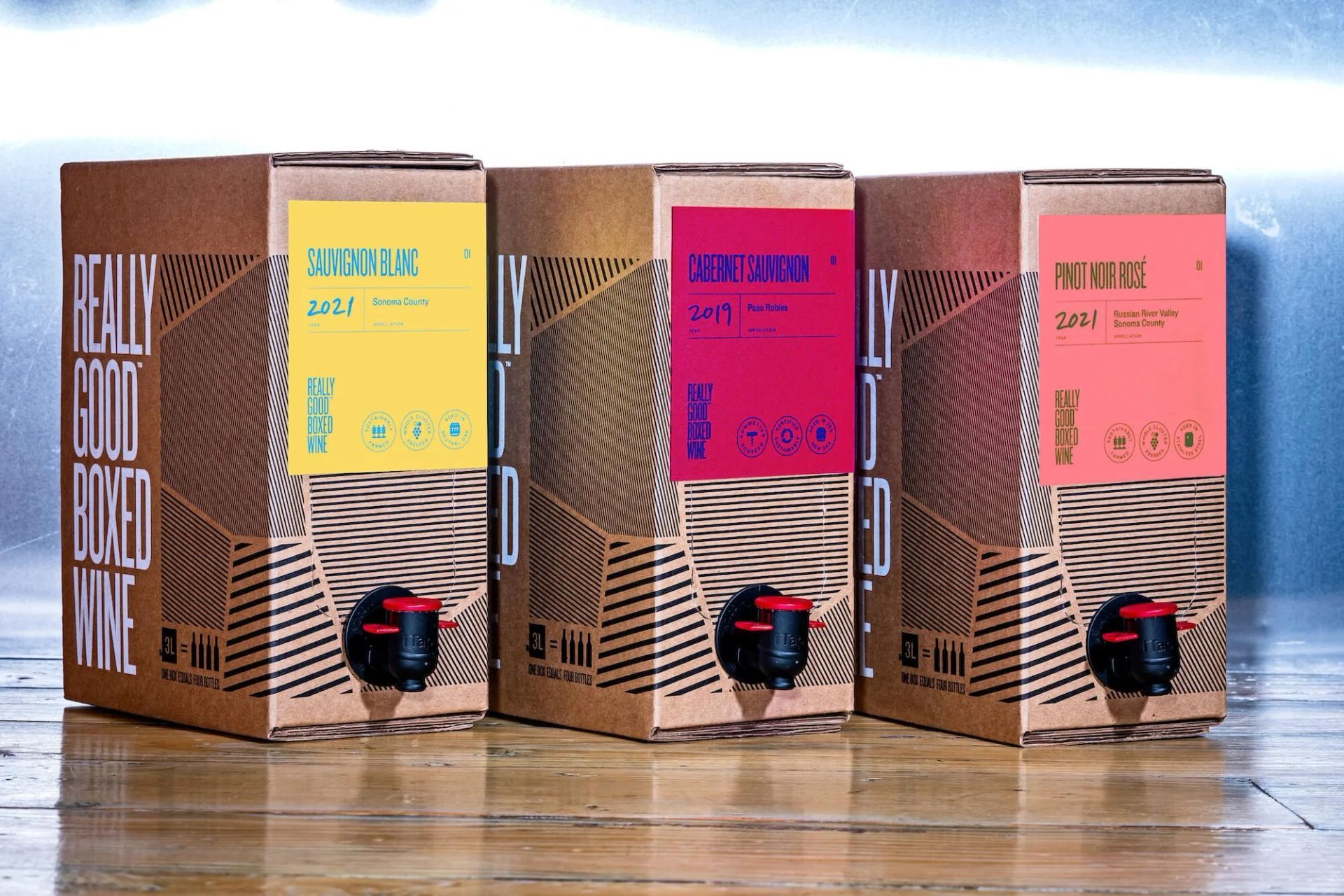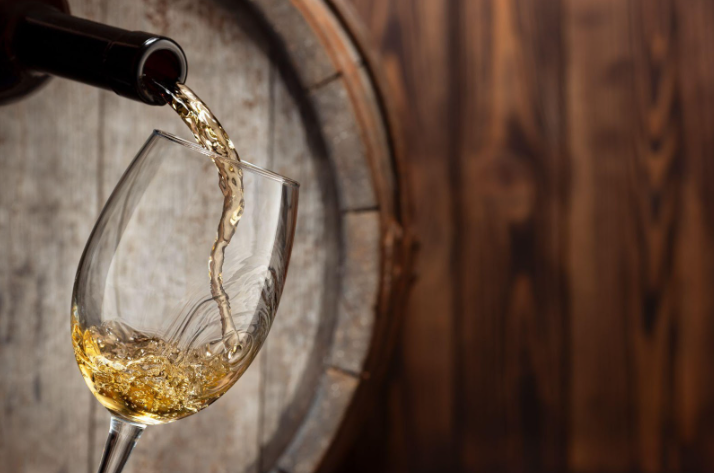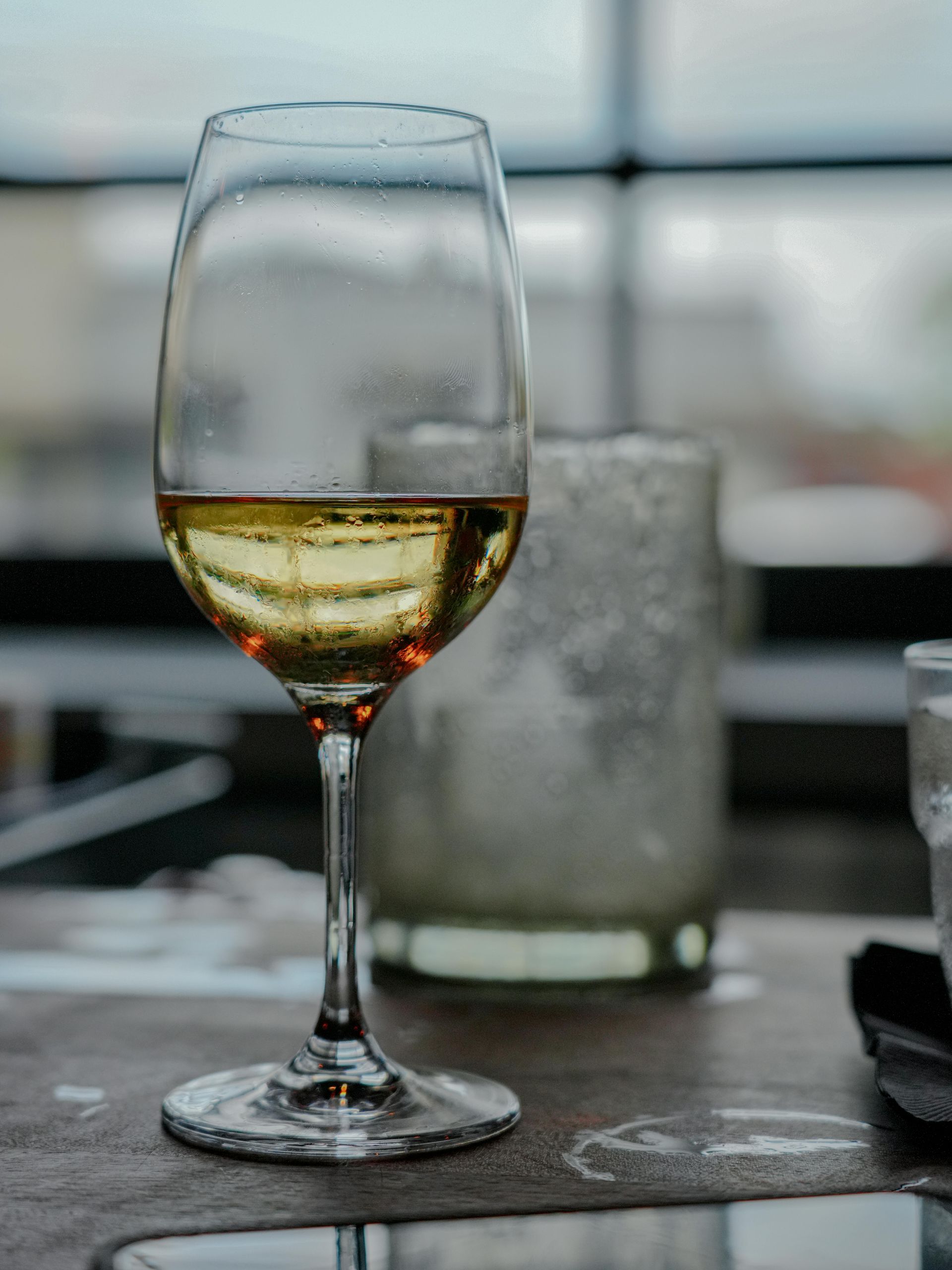Article

How Bell Springs Winery & Brewery is leading the sustainable wine revolution in Texas wine country
Wine in a box has evolved from a budget afterthought to a premium wine revolution, and Texas wineries are at the forefront of this transformation. At Bell Springs Winery & Brewery in Dripping Springs, visitors are discovering that some of the best wines in Texas Hill Country now come in innovative, sustainable packaging that challenges everything they thought they knew about boxed wine.
Bell Springs: Pioneering Alternative Wine Packaging in Texas
Bell Springs Winery & Brewery has been experimenting with alternative packaging since opening its doors. Owner Nate Pruitt and Winemaker Nic Compton have tested wine in kegs and wine in bags over the years, but the timing for consumers just wasn't right. However, with mounting consumer demand for sustainable options and compelling industry data supporting boxed wine trends, they recognized that wine in a box represents the best format for today's wine lovers.
"We've been exploring innovative packaging solutions for years," explains Pruitt. "The data supporting boxed wine trends doesn't lie – consumers are ready for premium wine in sustainable packaging."
Today, Bell Springs offers both red and white wines in premium 3-liter boxes exclusively at their Dripping Springs tasting room, with each box containing the equivalent of four standard bottles of the same premium wines served in their tasting room.
What is Wine in a Box? Understanding Bag-in-Box Technology
Wine in a box, officially known as "bag-in-box" packaging, consists of a wine-filled plastic bladder housed within a protective cardboard box. The technology was invented in 1964 by Australian winemaker Thomas Angove and perfected in 1967 with the addition of an airtight plastic tap system.
The innovation lies in the preservation method: as wine flows out through the tap, the bladder contracts, preventing air from entering and oxidizing the wine. This creates an environment where opened wine maintains optimal quality for 3-4 weeks, compared to 2-3 days for traditional bottles.
For Texas wine lovers seeking quality, convenience, and sustainability, wine in a box represents a perfect convergence of innovation and tradition.
The Global Boxed Wine Revolution: Market Trends and Statistics
The premium boxed wine market is experiencing unprecedented growth worldwide:
- United States: Premium boxed wine sales increased 9% in early 2025 compared to 2024
- Sweden: 60% of all wine purchases are in box format, including premium wines
- Australia: An astounding 50% of wine consumption comes from boxed wine
- Europe: Boxed wines comprise 20% of total wine sales and growing
- Global Market: Industry analysts project continued double-digit growth in premium boxed wine categories
This isn't a trend – it's a fundamental shift in how wine lovers approach quality, value, and environmental responsibility.
Environmental Impact: The Sustainability Advantage
The environmental benefits of wine in a box are compelling and measurable:
Carbon Footprint Reduction
- 84% lower carbon footprint compared to equivalent glass bottles
- Lightweight packaging reduces transportation emissions significantly
- Compact design allows more wine per shipping container
Waste Reduction
- 96% less landfill waste than glass bottles
- Cardboard boxes are made from FSC-certified, recyclable materials
- Only 31% of glass bottles are actually recycled in the US, while box materials are easily recyclable
Resource Efficiency
- Reduced energy consumption in manufacturing
- Lower water usage in production
- Decreased packaging materials overall
A 2010 analysis by Scandinavian state institutions found that bag-in-box packaging leaves only 12-29% of the carbon footprint of bottled wine and was superior by every ecological criterion tested.
Premium Wineries Leading the Boxed Wine Movement
United States Leaders
Tablas Creek Vineyard (Paso Robles, California) - This pioneer of California's Rhône movement and Regenerative Organic Certified winery offers their Patelin de Tablas wines in premium boxes. Wine Spectator selected Tablas Creek as one of the top six boxed wines of 2025. Their 3-liter boxes retail for around $95, proving that premium wine commands premium prices regardless of packaging.
Really Good Boxed Wine - This California-based company focuses exclusively on high-quality wine in sustainable packaging, offering single-vineyard wines at approximately $3 per glass with an 84% lower carbon footprint than bottles.
Black Box Wines Known as "The Most Awarded Boxed Wine," Black Box has earned numerous accolades for putting premium wine quality in box format, consistently ranking in top boxed wine tastings across major publications.
Gratsi Boxed Wine Winner of USA Today Readers' Choice Awards for #1 Best Boxed Wine 2025, Gratsi offers premium Mediterranean-inspired wines with zero added sugar and low sulfites.
International Pioneers
Australia: The birthplace of boxed wine continues to lead innovation, with premium producers like
De Bortoli and
Winesmiths offering high-quality cask wines alongside budget options.
New Zealand: Premium wineries like Dicey Wines in Central Otago are releasing premium Pinot Noir in 2-liter boxes, proving that even the most prestigious wine regions embrace the format.

Why Texas Wineries Are Embracing Wine in a Box
Texas represents a perfect market for premium boxed wine adoption:
Climate Considerations
The Texas heat makes proper wine storage challenging. Boxed wine's extended freshness after opening provides significant advantages for consumers in hot climates.
Outdoor Lifestyle
From Hill Country lake houses to backyard barbecues, Texans live outdoors. Wine in a box offers unbreakable, portable convenience that glass bottles cannot match.
Value Consciousness
Texas wine lovers appreciate quality and value. Boxed wine delivers four bottles worth of premium wine at a better price per glass.
Innovation Culture
Texas has always embraced innovation, from technology to energy. Wine in a box represents the next evolution in wine packaging.
Benefits for Every Wine Lover
For Consumers
- Extended Freshness: 3-4 weeks versus 2-3 days for bottles
- Better Value: More wine per dollar spent
- Convenience: No corkscrew required, easy storage
- Portion Control: Enjoy a single glass without pressure to finish a bottle
- Unbreakable: Perfect for outdoor activities, travel, boats
For Restaurants and Retailers
- Waste Elimination: No spoiled wine from by-the-glass programs
- Storage Efficiency: Stackable design maximizes space
- Cost Savings: Zero breakage, easier handling
- Branded Opportunities: Custom boxes enhance brand identity
- Consistent Quality: Maintains wine integrity throughout service period
Debunking Quality Myths About Wine in a Box
Myth: Boxed Wine is Lower Quality
Reality: Quality depends on the winemaker, not the packaging. Premium wineries worldwide use identical wine for both bottles and boxes. The bag-in-box materials are food-grade and flavor-neutral.
Myth: Wine Tastes Different in Boxes
Reality: In blind tastings, most people cannot distinguish between the same wine in bottles versus boxes. The plastic bladder is designed to be completely flavor-neutral.
Myth: Only Cheap Wine Comes in Boxes
Reality: Premium wineries like Tablas Creek sell boxed wines for $95, while many European premium wines have been available in box format for decades.
Myth: Boxed Wine Can't Age
Reality: While it is true that boxed wines are designed for near-term consumption, most wines consumed today, including many premium wines, are meant to be enjoyed young anyway.

Related Articles
Related Articles





